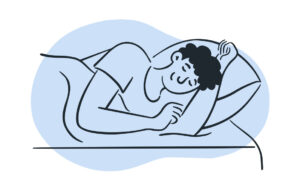What's a Mattress Warranty- What Does It Cover?
Disclosure: By clicking on the product links in this article, Mattress Nerd may receive a commission fee at no cost to you, the reader. Read full disclosure statement.
What is a Mattress Warranty?
A mattress warranty is a period of time, where the company who sells the mattress will cover the replacement, repair, or refund of the mattress under certain circumstances. Most warranties are put in place to protect the consumer in the case of a manufacturing defect, or something that causes the product to perform as promised. Warranties can be confusing, as they include a lot of legal jargon and can seem to “dance around” the real question, “what is covered by a mattress warranty?” Let’s dive in.
What Does a Warranty Cover?
Every mattress company has some small differences int heir warranty, so it is always best to look into a brand’s warranty section of their site. However, there are some commonalities between many of the popular brands. A mattress warranty covers physical defects in the product. One of the most common problems with a mattress is sagging. There is usually a certain threshold put in place by the company within which the sagging is a warranty issue. For most manufacturers, the threshold is 1.5 inches, but for some, it’s 3/4th of an inch. This sag is usually measured by putting a string or other straight line across the surface of the mattress, and then measuring from the string to the bottom of the sag with a ruler.
Mattress warranties also usually cover coils breaking or popping out of the side, the foams up top bunching up, the seams coming out of the mattress, the boxspring breaking, or any other physical defect that is not directly caused by the customer. Warranties are nice to have, but most of the time it is really only in place to cover mistakes made by the manufacturer. If you suspect you have a warranty issue, we always recommend contacting customer support and giving a very detailed explanation of your problem, before getting your hopes up that it will be covered.
What Does a Warranty NOT Cover?
Mattress warranties are not in place to cover comfort issues. However, most mattresses come with a sleep trial period, which is the time to decide if a mattress is a right fit for you. After the sleep trial is up, if your mattress feels lumpy, doesn’t support you properly, or causes pressure to your body, you may be out of luck as far as a refund or free replacement goes.
Think of warranties only to cover structural problems. Warranties do not cover damages that the customer caused. Some examples include your dog ripping a hole in the side of the bed, red wine spilled on the bed, the edges tearing when moving, etc. We mentioned sagging as something many warranties do cover, however, only if the indentation is a certain depth. If not, it is attributed to “normal wear and tear.” This is a popular term used in warranty coverage and is one that does not have a concrete definition in many cases.
Things That Can Void a Warranty
There are several things that can void an otherwise legitimate warranty claim. Here are some of the most common.
Removing the law tag. The law tag is the tag on the back of the mattress that says “do not remove under penalty of law.” The “law” part only refers to the mattress retailer and manufacturer. The end-user is free to remove it whenever he or she wants, but this voids the warranty. It would be the equivalent of filing off the VIN from a car and expecting the warranty to be honored. There is no proof it’s the same mattress that you ordered.
Stains. If a mattress is stained, the warranty is void. This even goes for problems in which the stain obviously didn’t cause the sag. Liquids can wear down the foams and cause them to deteriorate faster than they otherwise would. Additionally, stained mattresses are unsanitary, and no company wants to return those to the warehouse for a warranty claim. You can prevent stains to your mattress by using a waterproof mattress protector. These do NOT have to feel like plastic, and they are also NOT just for the incontinent. Even just perspiration, a little bit every night over the course of 10 years, can cause a stain and wear down the foams. Not to mention, there are other activities done in bed which can produce a wet spot.
Improper support. You need proper support under your mattress. This can take several forms. The most common is the matching box spring on top of a metal frame with a center support bar. Using an old boxspring will almost always void the warranty. If you don’t want a new boxspring, consider getting a platform bed with either a solid surface or slats which are very close together. If you use a bed frame, be sure that it has a center support bar with at least one leg going from the bar to the ground.
Not being the Orginal Buyer In many cases, if you are not the original purchaser of the mattress, the warranty no longer applies. Even if the warranty length has not expired, the changing of hands will cause it to disappear, even if a manufacturer error does occur. This is part of the reason that buying a “second-hand” mattress is illegal in many states.
Understanding Brand Warranties
Check out our breakdowns of popular mattress brand warranties below to help you understand all the confusing jargon.
- Amerisleep Mattress Warranty
- Bear Mattress Warranty
- Brooklyn Bedding Mattress Warranty
- Casper Mattress Warranty
- GhostBed Mattress Warranty
- Helix Mattress Warranty
- Layla Mattress Warranty
- Nectar Mattress Warranty
- Puffy Mattress Warranty
- Purple Mattress Warranty
- Saatva Mattress Warranty
- Tuft & Needle Mattress Warranty
- WinkBeds Mattress Warranty
The Nerd’s Summary
Mattress warranties can be confusing, and hopefully, after reading this article you feel more confident in understanding what they actually mean. In short, they really only cover structural defects with the mattress and unfortunately do not apply if your comfort preferences change years down the road. They can be voided if you don’t take care of the mattress, so be sure to keep it properly supported by a bed frame or base and protected with a mattress cover.


